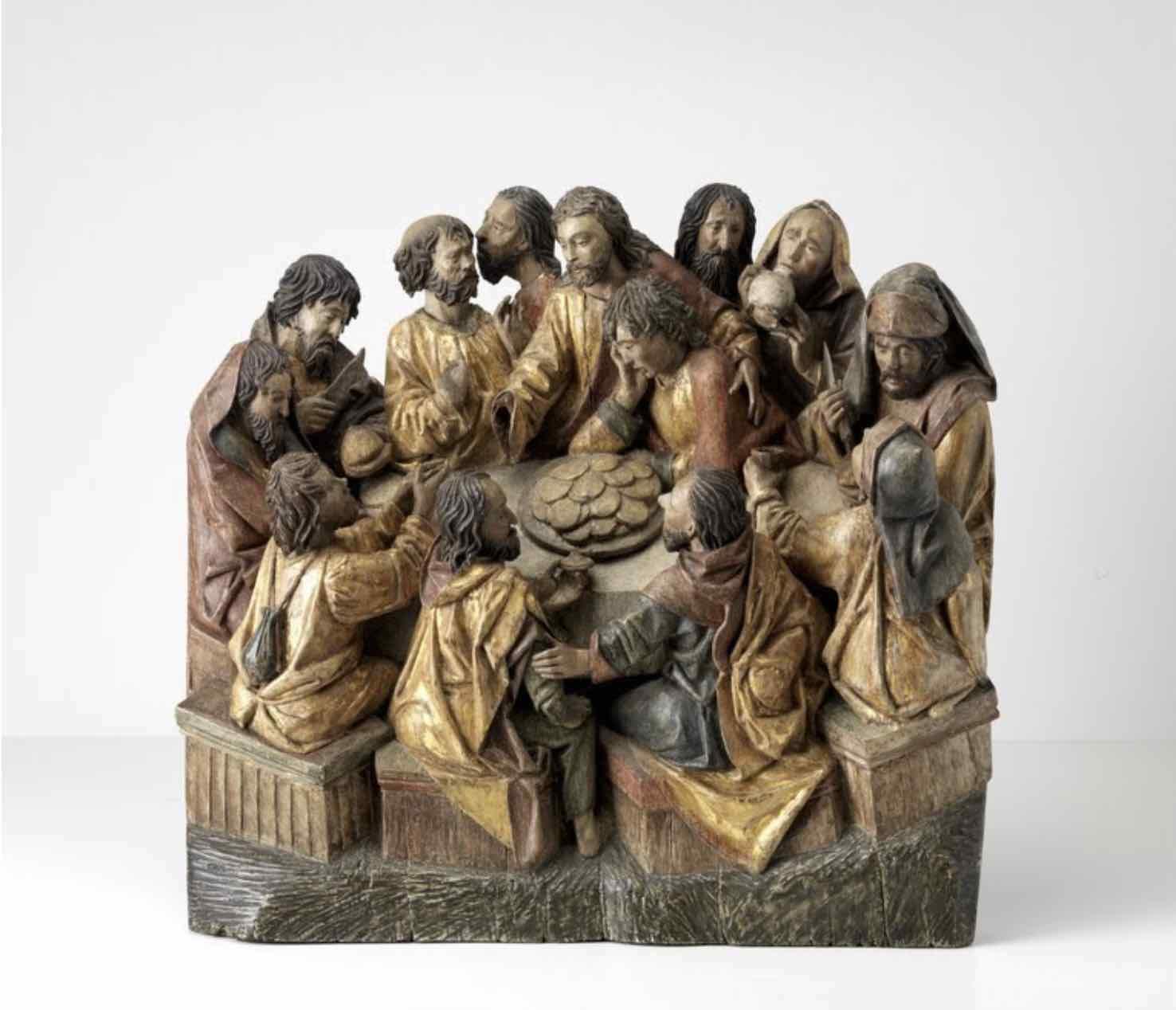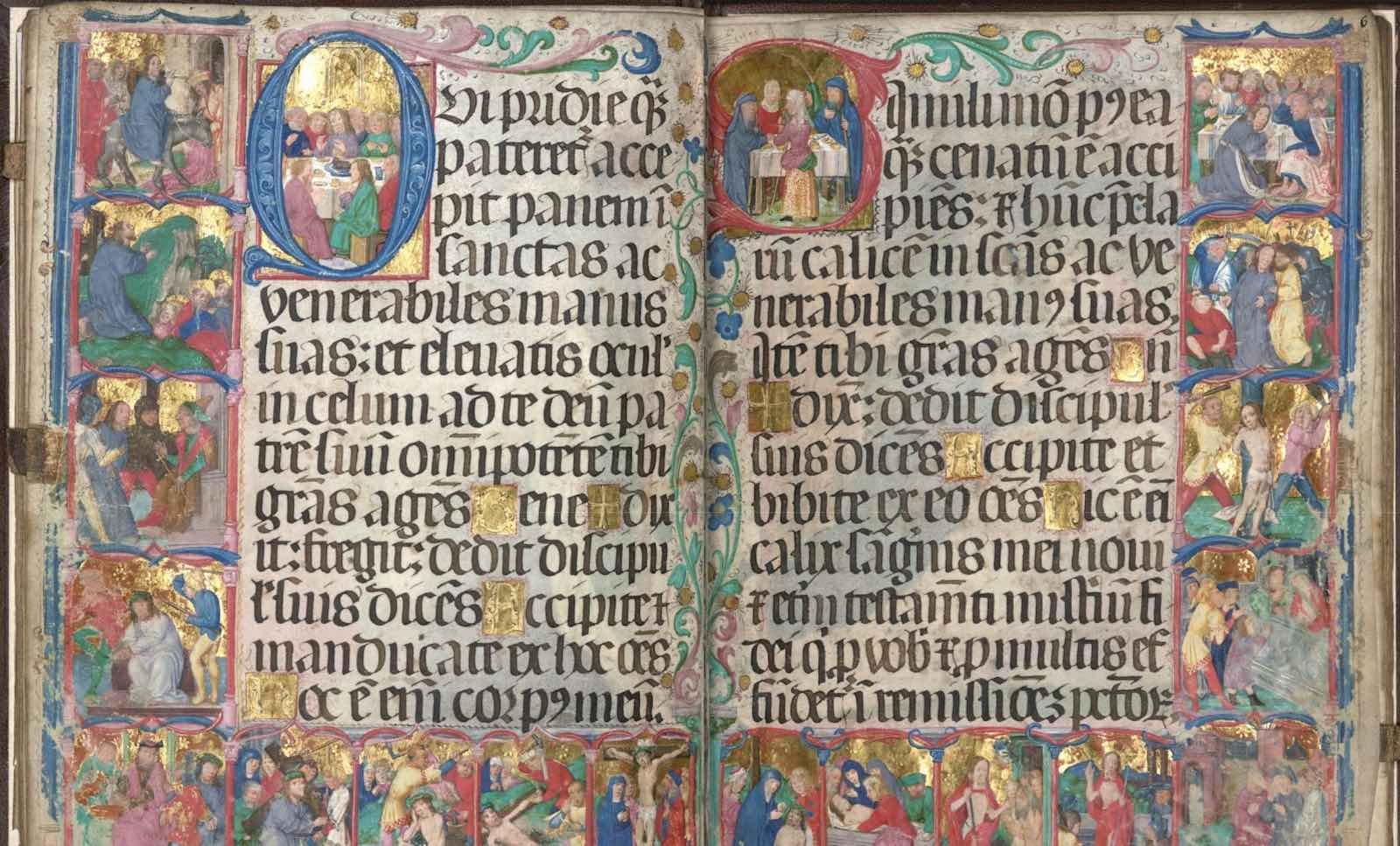The scene was also a popular motif to feature in the refectory halls of convents. In fact, Leonardo da Vinci’s fresco The Last Supper (c. 1495-98) adorns a wall of the refectory at Santa Maria delle Grazie, in Milan. Despite immense damage sustained by the fresco over the years—a result of the artist’s use of an experimental technique, poor weather conditions, and intentionally destructive human interactions—the work attracts hundreds of thousands of viewers each year.
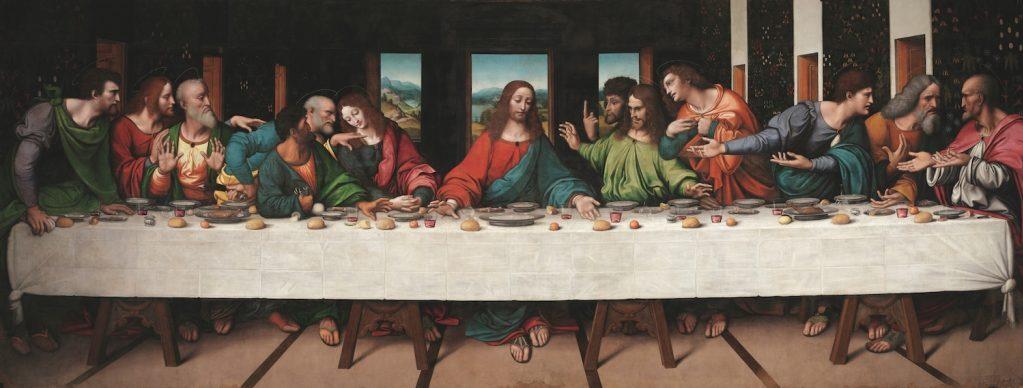
Leonardo da Vinci, The Last Supper, c. 1495–1498. Tempera on gesso, pitch, and mastic.181 × 346 in (460 × 880 cm). Santa Maria delle Grazie, Milan.
According to Christian teachings, the Last Supper was the final meal that Jesus shared with his disciples. The story is a pivotal one in the New Testament, and Christians view the Last Supper as the basis for their rite of Holy Communion.
With such significance to Christians, it makes sense then that the Last Supper has been rendered time and again, through an array of media, over the course of Western art history. While the scene has been a common one for artists to depict, the specific uses for depictions of the Last Supper have varied.
For example, Adriaen van Wesel’s The Last Supper (Het Laatste Avondmaal) would have been used to explain the particulars of the Last Supper as an event. Meanwhile, illuminations such as those by Ulrich Taler were more focused on the rite of Holy Communion itself.
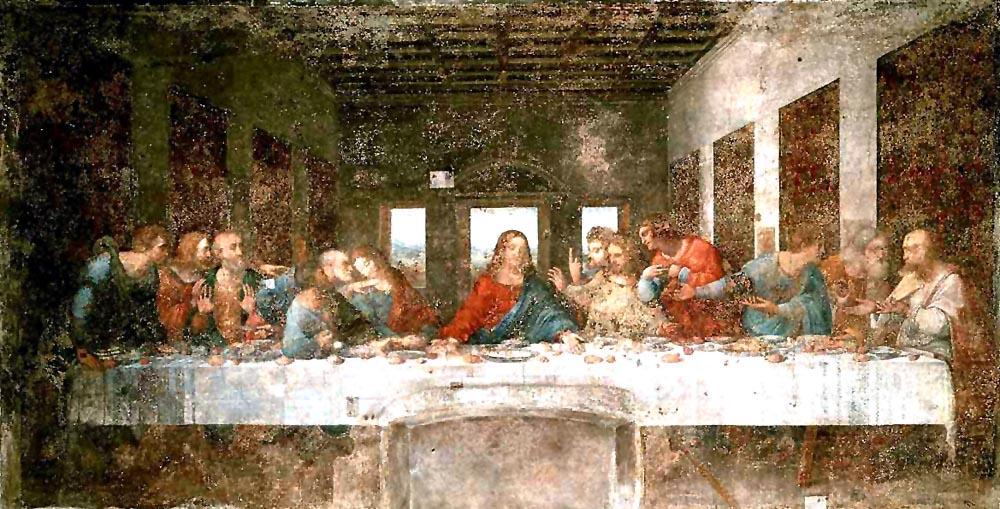
Leonardo da Vinci's The Last Supper as it appeared in the 1970s, after sustaining extensive damage and before restoration began.
Da Vinci’s Last Supper is not just the most famous depiction of this particular biblical scene, it is one of the most famous artworks of all time. Da Vinci is often referred to as the quintessential Renaissance man, someone whose genius is not unidimensional. This much can be backed up by the numerous topics (including anatomy, zoology, botany, geology, optics, aerodynamics & hydrodynamics) that he was not only interested in, but in which he acted as an innovative contributor. The artist’s reputation as a genius certainly has played a part in the continued fascination with his Last Supper.
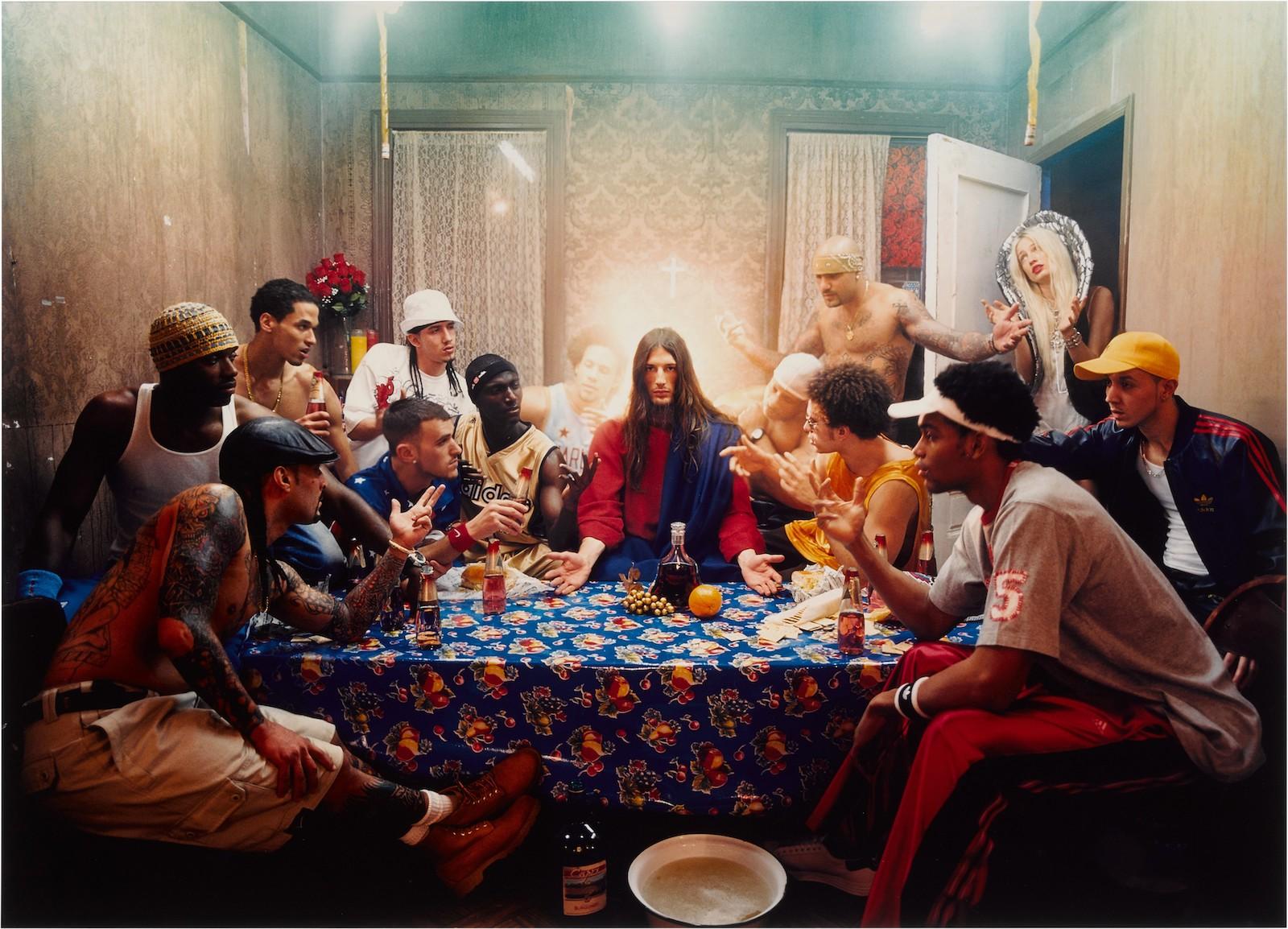
David LaChapelle, Last Supper from Jesus is my Homeboy, 2003. Signed, titled, dated, editioned 4/7, and annotated New York on the reverse. Chromogenic print. Sold: 63,000 USD.
In many ways, the enduring pop-cultural awareness of the last supper as a general concept would not be the same if this particular artwork did not exist. As such an iconic piece of visual culture, Leonardo’s fresco has also inspired countless further works of art. Contemporary artist David LaChapelle, Last Supper from Jesus is my Homeboy (2003) is just one example. And, of course, LaChapelle’s riff on da Vinci’s version has been immensely successful in its own right. In July of 2021, a limited edition print of the work was auctioned at Sotheby's for a final hammer price of $63,000.




